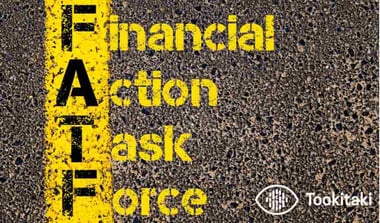Anti-Money Laundering and Counter-Terrorism Financing Rules
What are the AML/CTF Rules?
What are the AML/CTF rules? The Australian Transaction Reports and Analysis Centre (AUSTRAC) is the Australian government’s primary financial intelligence agency set up to detect, deter, and disrupt criminal abuse of the financial system. Their job is to identify and prevent money laundering, terrorism financing, tax evasion, organized crime, and welfare fraud. The government agency operates under the authority of the Anti-Money Laundering and Counter-Terrorism Financing Act (2006), and its efforts to combat money laundering include:
- Detect and Monitor: The agency uses its resources in financial intelligence to detect and monitor ML/TF activities.
- Report: FIs in Australia need to follow certain AML/CTF reporting regulations under AUSTRAC and must report transactions above a certain value, along with suspicious activities of any kind.
Australian Transaction Reports and Analysis Centre (AUSTRAC) works with a range of other government agencies such as law enforcement, security services, and revenue agencies to implement AML policies and procedures. Firms or individuals who fail to comply with these regulations can be detained or charged with fines.
Anti-money Laundering and Counter-Terrorism Financing Rules - How are They Made?
Anti-Money Laundering and Counter-Terrorism Financing Rules- The Anti‑Money Laundering and Counter‑Terrorism Financing Rules Instrument 2007 was made under Section 229 of the AML/CTF Act (2006). The AML CTF Rules provide details on the overall broader regulations set under the Act. Section 229 of the Anti‑Money Laundering and Counter‑Terrorism Financing Act (2006) empowers the Ceo of AUSTRAC to make obligations/rules prescribing matters required by the Act to the AML CTF Rules.
The Anti-Money Laundering and Counter-Terrorism Financing Rules are made by the AUSTRAC CEO after which they are registered on the Federal Register of Legislation. Any changes to the AML CTF Rules will be made through Amendment Instruments, individually. All of these individual rules are then formed into a single compilation of the full legislation which is the AML/CTF Rules. Any amendment to the AML CTF Rules is made by consulting with the relevant government agencies, industry, and other stakeholders.
What is CTF? What are the AML/CTF Rules & Regulations?
What is CTF? What are the AML/CTF Rules? AUSTRAC is Australia’s primary financial intelligence agency and regulator. They are tasked to prevent ML/TF and other financial crimes. Their agenda is to ensure that fintech, banks, and other financial institutions in Australia operate in compliance with AML/CTF regulations, and the standards provided by the Financial Action Task Force (FATF).
Australia’s primary legislation for AML is the Anti-Money Laundering and Counter-Terrorism Financing Act 2006. The AML CFT Rules are there to ensure that firms develop, adopt, and maintain their AML/CTF program which reflects their business’ circumstances. The program will set the processes, procedures of AML/ CTF obligations/regulations that will help to identify, mitigate, and prevent ML/TF risks.
AML/CTF Regulations:
ML/TF Risk Assessment
To identify the ML/TF risk of the firms, the following needs to be considered:
- customer’s profiles, including (a type of customer, source of funds, nature of the purpose of relationship with the customer, if the customer is PEP)
- what are the designated services that the firm will provide to the customer and the methods of service
- will the customer be using cash to conduct their transactions
- the criminal threat and possible vulnerabilities for the firm
- all foreign countries where firms will provide services.
Suspicious Matter Reporting (SMR)
Firms can combat ML/CT and money laundering techniques by reporting a customer’s suspicious behavior to AUSTRAC. FIs can detect suspicious transactions or activity by submitting an SMR to the relevant authority. It will be invaluable to AUSTRAC and partner agencies if they are able to identify the illegal activity with the help of prompt and accurate reporting of suspicious activities. The following are some common indicators to report an SMR if a customer:
- Undertakes any transactions that appear inconsistent with their profile
- Conducts multiple transactions within a short period of time
- Exhibit irregular behavior patterns in their transactions
- Use currency that is in suspicious condition (dirty or wet)
- Transfer funds transfer to high-risk countries, which are inconsistent with their profile
Firms must employ an MLRO who can decide whether the suspicion is of sufficient amount for the officer to report SMR to the relevant authorities. It is an offense to inform others apart from AUSTRAC that the firm has a suspicion about a customer. This is why in certain situations it might be inappropriate to ask for further information from a customer or a third party without alerting them to the firm’s suspicions.
Firms need to file and submit an SMR to AUSTRAC within 24 hours of suspicion related to terrorism financing. The period of time for reporting will increase by 3 business days if the firm's suspicion is related to money laundering, tax evasion, or fraud. The reports can also be submitted virtually via AUSTRAC Online. The employees need to inform the compliance officer or complete an SMR if they think a customer or transaction is suspicious. The compliance officer is responsible for submitting SMR to AUSTRAC.
Collection and Verification of KYC Information
Financial institutions need to document the procedures that they use to collect and verify Know Your Customer (KYC) information of their customers. The collection of KYC information would involve asking their customer to state personal details on paper or web. The verification of the KYC information would generally involve confirming these details against their identification documents (driver’s license, passport). Online identification verification services such as the government’s Document Verification Service (DVS) and other similar third-party service providers can also be used. Firms need to collect and verify the KYC information of their customers prior to providing a designated service to them. The type of customer that firms provide designated service to will determine what type of information firms need to collect and verify from them.
Ongoing Customer Due Diligence & Transaction Monitoring
Updating & Verifying Customer Information
Firms need to establish risk-based systems and controls to help determine whether they’ll need to update or verify details for their customers. This is similar to the collection/verification of additional customer information for KYC information. Although, ongoing customer due diligence occurs after a relationship with the customer has been established, not when it is being established. For example, there is a shift in customer transaction patterns such as the country where they are transferring the money, frequency, volume, value, etc, or if the customer may be involved in some suspicious activity.
Monitoring the Customers’ Transactions
Firms need to establish and maintain a program for transaction monitoring to help identify any suspicious transactions and report them to AUSTRAC.
Suspicious transactions can be complex, unusual, or large. They can even have uneven patterns or be multiple in number to avoid report thresholds. Financial transactions with no apparent economic or visibly lawful purpose can be deemed suspicious.
Enhanced Customer Due Diligence Procedures
Financial Institutions must have an enhanced customer due diligence (CDD) program in place in case there is a high money laundering and terrorist financing risk. The CDD program can help set procedures for such situations when a suspicious matter reporting obligation arises, or where the customer is a Prominent Public Function.
An enhanced CDD program must be applied when:
- A firm has determined under its risk-based systems and controls, that there is a high ML/TF risk
- A firm is providing financial services to a customer who is a beneficial owner or a PEP
- A firm has formed suspicion regarding the transaction
- A party to the transaction is physically located in a foreign country
Record Keeping
Record keeping is another important part of a Firm's AML/CTF regulations also include record keeping. The employees are required to:
- Keep the records of a customer's identity up to seven years after the date the firm last provided service to that customer.
- Keep any transaction records up to seven years after conducting the transaction.
- Keep a copy of the AML/CTF program for seven years until the program ceases to have an effect.
If the compliance program is modified, a record copy of the previous version must be kept for seven years from the date it is replaced by the new program.
What is a Legislative Instrument?
What is a Legislative Instrument? Legislative Instrument is a law made by the Governor-General, Ministers of the Crown, and other select government bodies under the power of the Act of Parliament, except those that are resolutions of the House of Representatives. Examples of Legislative Instruments include determinations, rules, and regulations.
Any kind of Legislative Instrument is supposed to be registered on the Legislation Register under the Legislation Act 2003. The Legislation Register contains authorized versions of all the Legislative Instruments made since 1st January 2005 along with every Legislative Instrument made before 1st January 2008 which is still in force.
The first AML regime for Australia was established by the Financial Transaction Reports Act 1988 (FTRA). The government required the reporting of transactions that involved certain cash threshold amounts. This requirement was introduced at a time when the focus was to tackle drug trafficking - a business that predominantly still runs on cash. In 1989, the Financial Action Task Force (FATF) was formed to address the same concern about money laundering in the drug business. They developed AML/CTF standards, commonly known as FATF 40 Recommendations. In 2005, in their 3rd round of mutual evaluation of Australia’s implementation of the FATF Recommendations, FATF found that the Australian systems were well behind international AML best practices. In response to this, in December 2005, the Australian Government released their Anti-Money Laundering and Counter-Terrorism Financing Bill for consultation, which later became the AML/CTF Act (2006) on 12th December 2006.
Anti-Financial Crime Compliance with Tookitaki?



